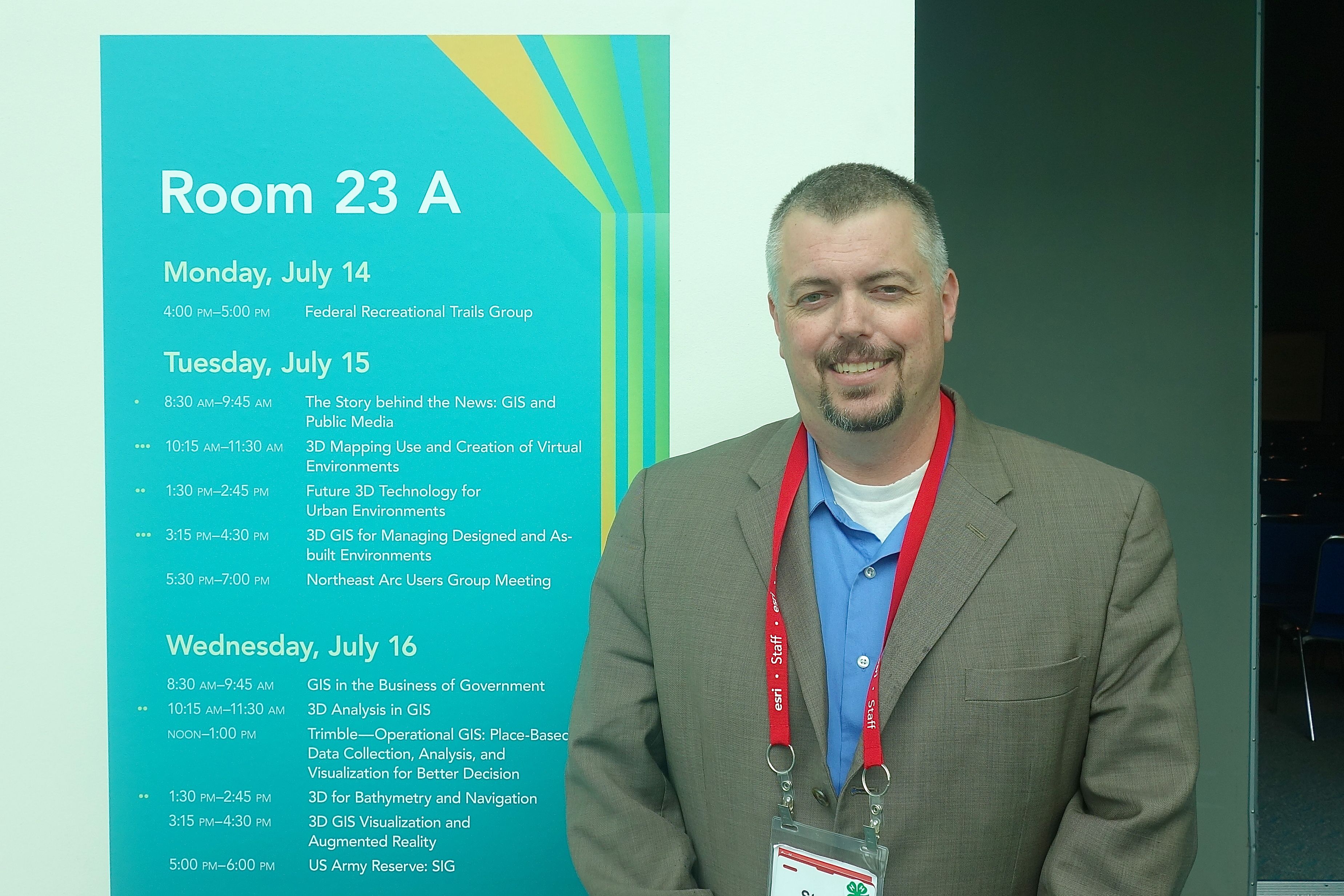Last week at the Esri 3D Mapping Forum, I caught up with organizer Steve Snow to talk the future of 3D. Steve is a maps specialist at Esri who focuses on topics including 3D mapping, LiDAR remote sensing, topographic charting, marine cadastre and point cloud technology. Here he draws on more than a decade’s experience to give us some perspective on how far 3D has come in the mapping world, and how far it still has to go.
SPARView: A basic question—what do you see in 3D’s future?
Steve Snow: First off, 3D has been around for a long time—it’s not new. I think what’s new about it is the way people are consuming it. The technology is changing, maturing, and it’s becoming more pervasive. Turning to something like GIS to use 3D data, you can do more than just visualize, you can provide real value such as analytics, data management, information sharing. To be able to provide this intelligence to the models, you need a program like ArcGIS.
SPARView: How will the use of 3D data develop within a GIS framework?
Steve Snow: Think of Jack Dangermond, he’s been with mapping for a long time. It’s very similar to how they had to go from black and white maps to color to printers—and of course before that mylar and everything else. What we’re seeing is this evolution and maturing of the 3D mapping process. So in ArcGIS not only will you be creating these 3D digital, visual maps, but you’ll be using it for your augmented reality and for your virtual reality. Printing hasn’t gone away either—printing’s actually evolved to where you can print 3D objects. So the technology is maturing.
SPARView: So far it seems like the most prominent uses for 3D printing are for the prosumer, or the architect. Can you speak to some of its other uses?
Steve Snow: Well, there’s also natural resources—you’ll be using it for forest inventories, you’ll be using it for subsurface mining and resources, the coastal environments. 3D is not just limited to the city. You can print out 3D buildings, the interior spaces, and the objects in them, but there is also the natural world as well.
SPARView: So it seems like 3D printing will find its greatest use as a communication tool. Is there anywhere you’d like to see 3D technology used where it isn’t used yet?
Steve Snow: I would like it to become common. So that when you talk about a map, they can use 3D or they can use 2D. If you’re asking about emerging technologies, I want these local governments to be able to start leveraging their GIS data holdings – turning all of that 2D GIS into 3D GIS data – being able to help the field worker out there, being able to put an object into their screen on the mobile device and then have it tie to the city’s database.






